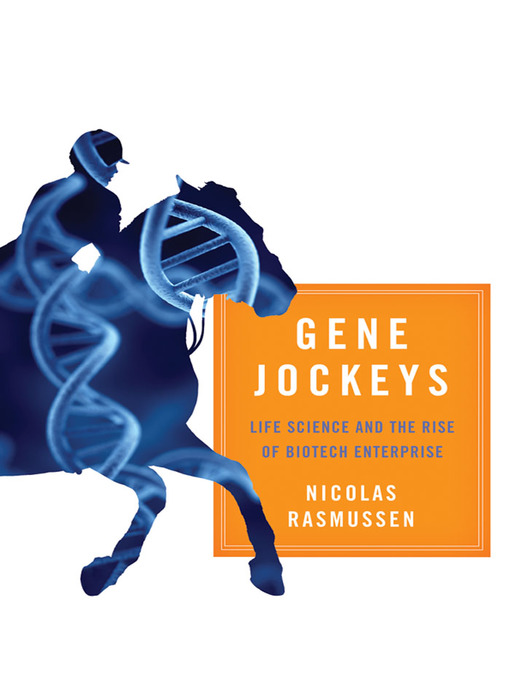The scientific scramble to discover the first generation of drugs created through genetic engineering.
The biotech arena emerged in the 1970s and 1980s, when molecular biology, one of the fastest-moving areas of basic science in the twentieth century, met the business world. Gene Jockeys is a detailed study of the biotech projects that led to five of the first ten recombinant DNA drugs to be approved for medical use in the United States: human insulin, human growth hormone, alpha interferon, erythropoietin, and tissue plasminogen activator.
Drawing on corporate documents obtained from patent litigation, as well as interviews with the ambitious biologists who called themselves gene jockeys, historian Nicolas Rasmussen chronicles the remarkable, and often secretive, work of the scientists who built a new domain between academia and the drug industry in the pursuit of intellectual rewards and big payouts. In contrast to some who critique the rise of biotechnology, Rasmussen contends that biotech was not a swindle, even if the public did pay a very high price for the development of what began as public scientific resources. Within the biotech enterprise, the work of corporate scientists went well beyond what biologists had already accomplished within universities, and it accelerated the medical use of the new drugs by several years.
In his technically detailed and readable narrative, Rasmussen focuses on the visible and often heavy hands that construct and maintain the markets in public goods like science. He looks closely at how science follows money, and vice versa, as researchers respond to the pressures and potential rewards of commercially viable innovations. In biotechnology, many of those engaged in crafting markets for genetically engineered drugs were biologists themselves who were in fact trying to do science.
This book captures that heady, fleeting moment when a biologist could expect to do great science through the private sector and be rewarded with both wealth and scientific acclaim.

